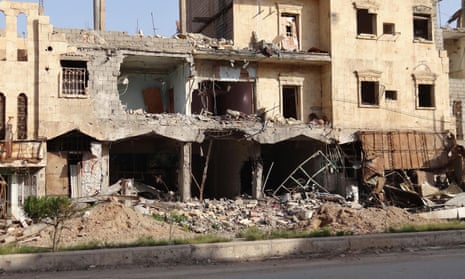Islamic State fighters have broken through government defensive lines in the Syrian city of Deir ez-Zor, surrounding a military airport and cutting off food supplies for roughly a quarter of a million civilians in what could become a major humanitarian disaster.
Deir ez-Zor in eastern Syria is divided between the militants and the government of Bashar al-Assad. The areas controlled by the government have long been under siege but were sustained by supplies flown in to the nearby military airport and by airdrops from the World Food Programme.
But on Monday, Isis fighters, which sources from the city said were primarily reinforcements coming over the border from Iraq’s Anbar province, broke through government lines, splitting its territory in half and taking control of the area where the WFP’s airdrops landed.
The UN body announced on Monday that it had halted its airdrops, leaving a quarter of a million civilians believed to reside in the government-held areas of Deir ez-Zor under a tightened Isis siege. The Syrian military said it responded with a series of airstrikes on Isis positions in the area.
Areas controlled by Isis are not covered under a nationwide ceasefire deal intended to pave the way for peace talks that will begin next week in Kazakhstan.
The attack is the fiercest assault by Isis on the city after months of stalemate, with dozens already killed on both sides. The group has faced concerted assaults on its territory in both Syria and Iraq, as it grapples with the losses of key leaders in assassination strikes by the US-led coalition.
In Iraq, the group is under attack in its most populous city, Mosul, where Iraqi forces backed by the US and militia fighters are inching their way forward.
In Syria the group has lost much of the countryside around its de facto capital, Raqqa, and is facing a Turkish-backed assault in the coming days on a key city north of Aleppo, al-Bab. “Al-Bab now is surrounded and the al-Bab operation is going full force despite some hiccups along the way,” said Ibrahim Kalin, a spokesman for the Turkish president. “We are determined to clear that city from all Daesh [Isis] elements.”
Observers believe the aim of the Isis assault on Deir ez-Zor is to preempt any Syrian government offensive on its territory while the group is distracted by battles elsewhere. The area under Isis control in the city has an estimated 10,000 civilians and is hemmed in by government forces to the south and the Euphrates river to the north.
A source from Deir ez-Zor with knowledge of the local terrain said Isis lacks the firepower to take control of the entire city. “They most likely wanted to take the initiative and prevent regime attacks, cut off government soldiers in the city, and put a stop to the airdrops,” the source said. “Their positions right now are exposed so they’re likely to move towards the military airport and seize civilian districts to take shelter there, so the regime can’t attack them unless they adopt a scorched-earth policy.”
The military airport in Deir ez-Zor, manned by elite units from the Syrian Republican Guard, has withstood repeated assaults by Isis.
The city was first besieged when Isis conquered the historic city of Palmyra, cutting off land supply routes into Deir ez-Zor city except for supplies flown in by air. Many of the city’s residents have endured harsh deprivation, with limited fuel, food and water and repeated flare-ups of violence.
Deir ez-Zor has long had major strategic importance. It is close to key oilfields that were a crucial financial lifeline for Isis and is also near militant supply lines that were used to smuggle fighters across the nearby Iraqi border, even during the US occupation.
The fighting in Deir ez-Zor shows Isis still has the capacity to launch major military operations despite the loss of much territory and tens of thousands of fighters on multiple battlefronts over the last two and a half years. Late last year the group once again took control of Palmyra after the retreat of the Syrian military, which had taken the city back from Isis just months earlier.
